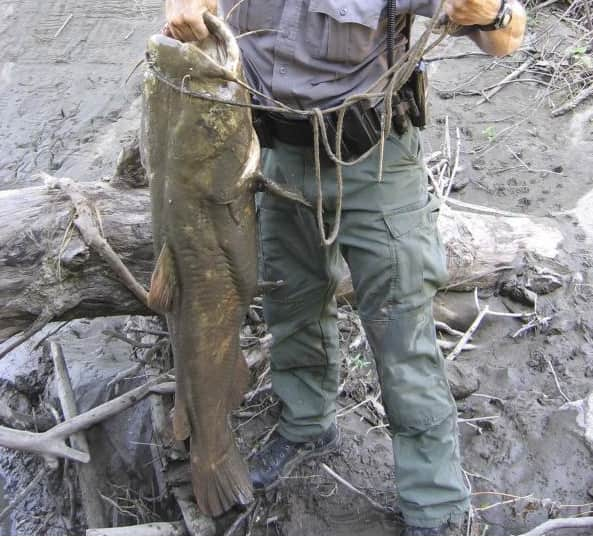Iowa Lawmakers Shoot Down Noodling Proposal
OutdoorHub Reporters 01.26.14

Thirteen states currently allow noodling, also known as hand fishing, but Iowa will not be joining that number. A state Senate subcommittee rejected a proposal to end regulations against catfish noodling on Wednesday. Catfish is the only species in the state protected from hand fishing, but opponents of the ban also say that the fish is one of the most popular with noodlers.
“Catfish are the No. 1 sport fish in Iowa,” Iowa Department of Natural Resources (DNR) fisheries manager Joe Larscheid told the Sioux City Journal. “Our data shows that people go after them big time.”
That includes traditional anglers, many of whom oppose handfishing due to the effect it may have on the catfish population. Supporters of the noodling ban say that the practice removes fish from their nests and exposes eggs to predators. It is a theory that is supported by DNR biologists, which say that while legalizing the activity should not affect catfish populations statewide, anglers might notice a change locally. Anglers worry this could mean a shortage in trophy-sized fish.
Noodlers catch fish by sticking their hands near catfish holes. Since catfish are normally protective of their nests, they will bite anything that comes within striking distance. When this happens, a defense mechanism will motivate the fish to latch onto the noodler’s hand, allowing the fish to be brought to the surface.
DNR biologists say that the high success rate of noodling and the fact that it targets large, sexually mature fish can be a cause for concern. In 2005, Missouri allowed a handfishing season but later closed it due to its negative impact on catfish numbers.
Noodling can also have significant dangers, including the threat of drowning when handling a large fish and injuries caused by the animals themselves. Catfish holes are also popular hiding spots for snakes, snapping turtles, and sometimes even alligators.
Supporters of noodling say that ethical hand fishing should be treated no differently than other forms of fishing, and should not have a dramatic impact on catfish numbers.

